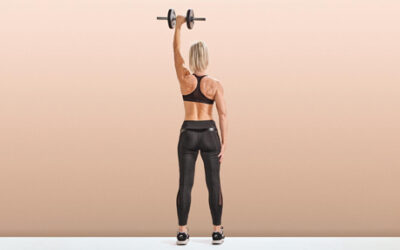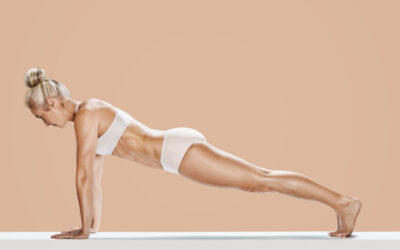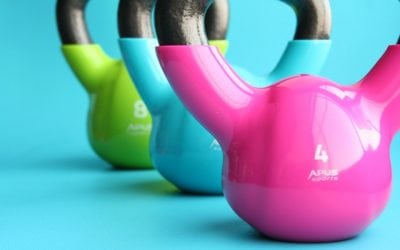What is cardio and should I do it? Answering technically, it is any physical exercise that uses oxygen to meet the energy demands of a workout. In my experience though, people ask this question when trying to understand whether or not this mode of training will help them successfully achieve their physical goals.
Steady-state cardio
Old-school, mainstream advice suggested that better results occur with high volumes of steady-state (like running, cycling, rowing and swimming) cardio training. Our understanding of this has changed more recently. In fact, some say steady-state cardio may be the least efficient type of exercise one can do in terms of energy usage in the body and although it uses fat as a primary source of fuel, it doesn’t notably reduce body fat stores.
Steady-state cardio: the benefits
Still, it makes sense to bring some steady-state cardio into your training, even if only because most physical function is powered by the aerobic system (for example, breathing, movement, and digestion). Cardio is also very effective at lowering your blood pressure, and reducing your resting and working heart rates. This latter benefit is suggestive of both a healthy cardiovascular system and of good “parasympathetic tone” in the nervous system. Strengthening this aspect of the nervous system results in improved recovery from stress, and a better ability to relax and focus. Anywhere from 20-40 minutes a couple of times a week will afford you benefits. Try for an exertion level that makes it difficult, but not impossible, to have a conversation.
Another good reason you may want to perform steady-state cardio regularly is if you want to complete an endurance event (whether a marathon, triathlon, or similar). If this is the case, you’ll have to apply the principal of specificity and mimic your event in training. This means that steady-state cardio will comprise the greater aspect of your training.
High intensity interval cardio training (HIIT)
It was previously believed that it was cardio that kept the heart “fit”, but according to fitness expert Phil Campbell (author of Ready Set Go) the heart is comprised of all the muscle fibre types (type l, type lla and type llb) and their associated energy systems. This means that it requires both aerobic (requiring oxygen for fuel) and anaerobic (not requiring oxygen for fuel) training to keep it healthy. Cardiovascular exercise, as well as traditional strength training, tends to work only the aerobic processes of the heart through training the type l (slow-twitch) fibres. The beauty of HIIT is that it works all fibres, and both aerobic and anaerobic elements. A massive upside to engaging in HIIT is that it promotes human growth hormone production. This in turn, increases muscle growth and decreases body fat. It also aids in promoting overall health and longevity.
HIIT: the benefits
Current evidence suggests that high intensity interval training (HIIT) is very effective at reducing body fat (up to nine times, in fact, according to a 1994 study) and requires far shorter training sessions. When compared to moderate-intensity steady-state training, HIIT reduced overall fat in obese women by 10% over twelve weeks in half the amount of time usually spent exercising. In addition, a systematic review and meta-analysis comparing moderate-intensity continuous (steady-state) training with HIIT showed that interval training provided 28.5% greater reductions in total absolute fat mass than moderate-intensity continuous training. HIIT works incredibly well as a time-efficient training tool because it increases your consumption of oxygen after the workout. This means burning more calories even after leaving the gym. It’s also a great way to protect the heart because it involves short bursts of energy followed by rest periods.
There are more reasons you’ll like HIIT. It boosts mitochondrial function in the muscles, resulting in enhanced nutrient absorption and gene-related promotion of muscle growth, and it promotes mitochondrial biogenesis (new growth of mitochondria, which means you can metabolise more fat and glucose). These two factors also offer excellent anti-aging benefits.
HIIT is helpful for diabetes sufferers and improves blood pressure, cardiovascular health, insulin response and other health markers. It’s also beneficial for those with heart disease. One of the most motivating reasons to include HIIT in your training regime is that no matter how fit you get, you never have to increase the amount of time spent training: you simply increase your intensity in the sprint moments. Twenty minutes twice a week is ideal. I wouldn’t recommend it more than three times a week, or for more than thirty minutes at a time. In fact, because the high intensities can be quite hard on the body, it would be wise to give yourself a break every now and then. Think of HIIT work as stress-inducing and challenging to the body, while steady-state cardio is calming and provides recovery (assuming you’re not training for a sporting event). This means it may be useful to switch between the two (perhaps two to three months of HIIT, followed by a month of steady-state cardio).
How to HIIT
If you’re a beginner to exercise, start with some basic steady-state training for the first six to eight weeks before trying HIIT. Begin with twelve to fifteen minutes, building to twenty minutes and an ever-increasing intensity. If you’re already used to physical training and you’re pain and injury free, you could include the below programme:
Warm up on your chosen piece of cardio equipment. Now sprint for twenty seconds, then take a sixty second recovery period. “Recovery” is the low-intensity version of whatever your sprint entailed. For example, if you ran on the treadmill, you’d walk your recovery. Your recovery period plus your sprint period is called the “cycle”. Repeat this cycle 8-10 times initially, building on this number over time. Ideally, your sprint period could be anywhere from 20-30 seconds, and your recovery period anywhere from three to four times that of the sprint. Don’t train for more than 20-30 minutes at a time because the aim is to work at a very high intensity which you’ll do better in a shorter workout. Keep your sprint and recovery periods constant throughout each workout, but use the parameters to create variety in future workouts. In other words do a 20/60 (sprint/recovery) workout for a while, then switch to a 25/75 one, then maybe to a 30/120 one; you can also vary the number of cycles as well as your overall workout time. This is just one example of a HIIT workout and it’s one I use regularly, but there are plenty of other ways to high intensity interval train.






